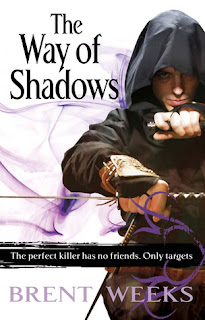Hello and welcome to another edition of Blogging Tips! So far, doing these has been a lot of fun, and actually help me evaluate my own blogging. I love encouraging people to blog, and I love lending a helping hand. Thanks again to the wonderful
Lauren, who lent some advice in the comments section. You can see that
here if you are interested. And, if you're interested, please don't be afraid to ask questions or lend your own experience and advice in either the comments section or by emailing me
here.
Like last time, I'll be posting her advice, and then expanding on it with my own thoughts as well as adding my own additional advice. This post is specifically about writing a book review, so I hope it helps.
Her advice: Include a picture, rating, and short summary.
My Thoughts: Yes, yes, and yes! And make sure all three are easily accessible in the review. People will always look at the picture and the rating to get a general idea, and then the summary. I know if it's a book I've never heard of my first desire is to find out what it's about. I recommend putting the picture, rating, and summary at the top of the post, though the rating can just as easily go at the bottom.
Pictures can be taken from anywhere, and taking your own always has a really great affect and makes things personal, but if you're like me, you may just want to get them from Goodreads. And that way, you also know that every picture will be the same size.
The most important thing to keep in mind about ratings is that you need a set way to rate. If you're going to do it out of five stars, make sure you do it out of five stars every time. And have some set criteria. I do it based off of how I feel when I immediately finish the book and then, on top of that, how well it was written and thought out. I work to separate myself from the name of the author or the fandom, because it's more accurate for me that way. It doesn't always work, but it allows me to really admit whether a book was actually good or just popular. Rating can be hard, and it helps to keep a little chart somewhere, whether it's public on your blog or not, about what constitutes a good book for you.
Summaries can be done in two main ways. Either take it from somewhere else, like the back cover, or summarize it yourself. I like to summarize myself, just because sometimes the blurbs can be misleading sometimes. However, both ways are pretty good.
Her advice: Include likes and dislikes. Discuss what I would want to know as a reader.
My thoughts: Including both likes and dislikes is important. And remember, when writing posts, the first and last points will be the most powerful. People are more keen to remember the first and last thing they read, so if you really want to get something across, whether it's a problem or a perk, put it in one of these locations.
Discussing what one might want to know before going in is important. It can be pretty much anything. For me, if there's some really adult stuff, like graphic sex, I try to put that somewhere where someone can find it immediately. Or if there's some sort of possible trigger, like rape. Having these notices can help. And, generally, just giving advice about the book, like whether the cover is super misleading, can be really beneficial to those interested in reading. A good rule of thumb is to ask yourself whether you would have wanted to know this before diving in.
Her advice: Wrap it up.
My thoughts: Yep, this is super important because it helps get the general point across to the reader. This isn't unlike summarizing an essay you've written for class. Lauren likes to use .gif's or pictures (and she does an AWESOME job of it). I don't do this, but I love how it gets across information. As they say, a picture is worth a thousand words.
My advice: Keep your format the same.
It doesn't have to be cookie cutter, but it's a good idea to keep each review somewhat the same, format wise. If you always start with a summary, start with a summary. If you always end with the rating, end with the rating. That way, people who stop by your blog regularly won't have trouble finding the information you need. Don't let this stop your creativity, but also don't start doing experimental review formats every single time you post. Finding your rhythm will take time, but you will find it.
My advice: Include links to the author/where to buy/Goodreads.
This isn't really that necessary, since it's not exactly hard to google stuff nowadays, but I like to include links to make things even easier. I know after reading certain reviews I've gone and bought the book immediately (yes, I have a problem). It can be a nice touch.
If you're still looking for how to format your posts, you can always ask me a question. Or, just stop by other book blogs and see how they work theirs!
Thanks again to Lauren!
There won't be another blogging tips post until January (they're now a monthly thing, rather than biweekly as I was once going to run them). I'm not sure exactly what the theme for it will be, yet. Thanks for stopping by!












































